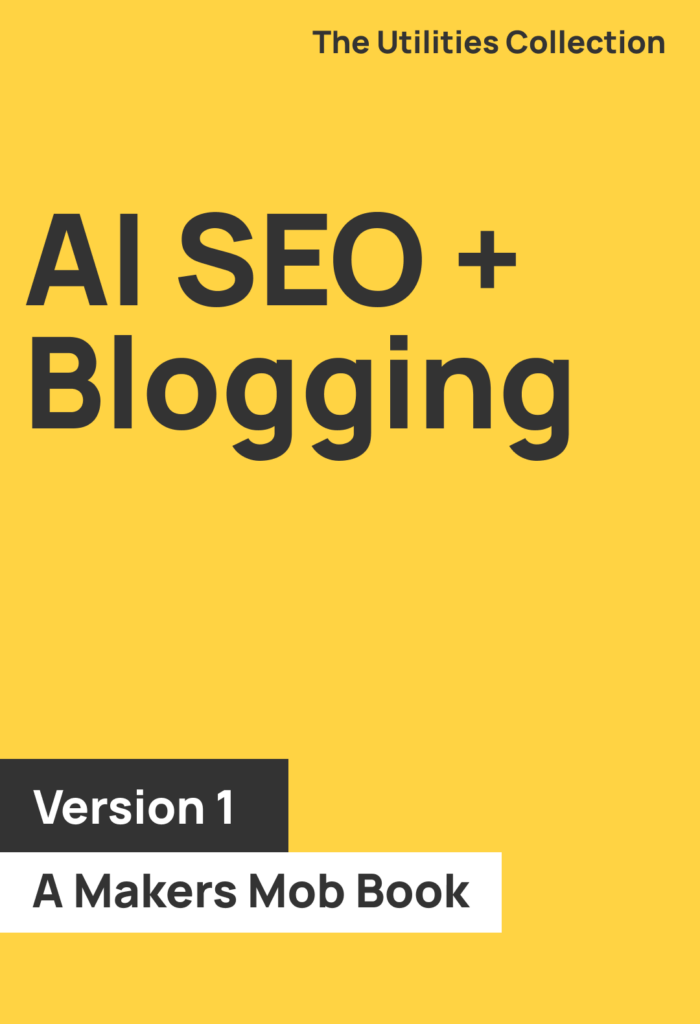A great blog post title is the hardest working piece of content you’re ever going to write.
A bad blog post title is like a leech sucking the life out of your amazing content.
Sorry for the leach imagery, but, really, a bad blog post title is as bad as a leach. I wanted to burn that into your memory, so I went with leech.
If your blog post title is bad, all the amazing content you’ve created behind that blog post title will wither and die because no one chose to click on your not-remarkable title.
But if your blog post title is great, then it’s kind of like this little cheerleader with tons of energy and really big pom poms grabbing the attention of everyone who happens to be looking for the solution to the problem that you’re going to solve with your post.
That’s the kind of high-energy, emotional work your blog post titles should be doing for you. If you feel like maybe your titles aren’t doing that just yet, don’t worry, we’ll teach you how and one of the great things about titles is that you can always change them.
Are Titles Really That Important?
Umm, yes, they are. Remember what I said about the leech? I wasn’t kidding.
Your blog post titles are the most important thing you’ll write in any post because they are the first interaction your reader is going to have with you.
If I were writing a job description for a post title it would include:
- Must be eye-catching to the reader who is bombarded with 5,000 brand messages daily.
- Must entice the reader to click through to read the amazing blog post.
- Must depict a clear and concise message of what the amazing blog post is about.
- Must induce the reader to share the amazing post.
- Must help with SEO so that the amazing blog post has a chance of showing up in search engine results.
You’ve got a handful(ish) of words to cover all of those vitally important tasks. It’s a big ask so it’s important to find a way to master blog post title writing.
How Is One Blog Post Title Supposed to Do All of That?

Well lucky for you, there’s a formula to it.
Problem + Emotion + Qualifier
It doesn’t always have to go in that order, but if you can get each of those three things into your blog post title, then you have a very solid blog post title on your hands.
The Problem
The problem is the main topic of your post. Every post you write should solve a problem of some kind for your reader.
They are coming to you for help with the problem, you need to make sure you are helping them and you need to make sure that they understand that just by reading your title.
The problem is one part of what makes your title “eye-catching”.
When you include the problem, you’re speaking to the person who is looking for a solution. It’s also usually how you give a clear and concise depiction of what will be in your post.

The Emotion
Almost every title is going to have a problem in it.
To stand out from all of the other titles, you’ve got to evoke some emotion.
You’ve got to tug at their heartstrings or pique their curiosity or sometimes even give them a small scare. Like a, “fear of missing out” type of fear. Nothing clickbait-y, but a little something that gets them in the feels.
The emotion is doing a lot of work in your title. It’s eye-catching (Amazing! Mind Blowing!), it’s enticing the reader to click and it’s helping to get the reader to share your content.
The Qualifier
The Qualifier is what will really set your titles apart from the sea of other titles out there. It sets some parameters around exactly what your outcome will be or exactly who your outcome is for.
It gives your title some exclusivity. Like your post is a private club for people who want this very particular thing.
The Qualifier is able to perform a lot of the same functions as the Emotions do, but the Qualifier really shines when it comes to getting people to share. The qualifier is the part of your title that makes your reader start to feel a connection to your content and that connection is what makes people want to share.
Let’s take a look at some examples:
9 Simple Habits for People Who Want to Crush Debt & Build Wealth
The problem this post title is addressing is debt. “Crush Debt” makes that abundantly obvious and it’s clear that when you click over to this post you’re going to find 9 habits to learn how to do that.
Debt evokes negative emotions. Crushing it and doing so with simple habits also evokes emotions like confidence and relief at the idea of being unburdened by your debt.
The qualifier “for People Who Want to Crush Debt & Build Wealth” is interesting because it gives you an outcome, but it’s also singling out a group. It’s speaking directly to a particular type of person. This isn’t for everyone, it’s just for the people who really want to crush debt.
That’s powerful and it’s something you should work into your titles whenever you can. You always want to be speaking directly to your audience.
13 Amazing Dollar Store Organizing Hacks You Must Do Right Now
Here’s a good list post title. Including a number in your title, especially an odd number, will instantly make it more clickable. If you do a search for “dollar store hacks” on either Pinterest or Google, nearly all of the top results will include a number.
It’s not a fluke.
People are more likely to click on a post with a number.
The more people that click on your post, the more likely it is you will climb up the search rankings. (Including a number won’t do all of your SEO work for you, but getting clicks will help a lot).
The problem here is organizing and also, bonus points, there’s the problem of “expensive” organizing. This post is going to help you get organized AND it’s going to do it in a budget-friendly way since we’re talking specifically about Dollar Store hacks.
The emotion here is curiosity and it’s the word “amazing” that makes you curious. Why are these hacks so amazing?
The qualifier here is “You Must Do it Right Now”. If that’s not a sense of urgency, I don’t know what is. It’s giving me a tiny bit of fear in the form of “What’s going to happen if I don’t do these right now?” What are these things that I need to do IMMEDIATELY?

Adding a time parameter is a great qualifier.
In fairness, it might not be the perfect qualifier for an organizing hacks title, but if your disorganization is causing you more than mild stress, then perhaps “right now” is exactly the right time parameter.
How I Lost 40lbs In 1 Month Without Starving
This is an example of a title for a “case study” post and the title is doing it’s job very well.
The problem it’s addressing is losing weight. It seems like everyone wants to know more about that. In fact, there are millions of posts out there that will claim to teach you how to lose weight.
That’s what makes the qualifiers in this title so important. There’s a time parameter “in 1 month”. People are impatient and they want to know that there is a timeframe they can expect a result within.
Then there’s the second qualifier “without starving” which is going to invoke the emotion that you need.
Everybody wants to lose weight, but the feeling of “starving” while you’re on a diet is one of the biggest deterrents for anyone who wants to start a new weight loss program.
Promise them you’re going to take that feeling away and still deliver the results that they want and you have an excellent chance of getting that person to click.
“Please Make That Again” Hamburger Casserole
These are six hard-working words.
The problem we’re solving here is how to make a hamburger casserole. If I click on this post and don’t get my Hamburger Casserole recipe, I’m going to be sorely disappointed.
“Please Make That Again” works to evoke emotion and it also works as your qualifier. To me, the emotion here is relief at having a recipe that people in your family are actually excited to eat for dinner.
Moms of the world will back me up on that one.
As a qualifier “Please Make That Again” works because in learning this recipe, you’re becoming a person who has people requesting the delicious dinner you made.
You’re becoming the person that people say things like “Oh, have you tried her Hamburger Casserole?” or “Please bring your Hamburger Casserole to the potluck!?” or “I need that Hamburger Casserole recipe!” about.
That’s a special feeling and people love to feel special.
Too Much Makeup? 6 Simple Tips to Get It Just Right Every Time
Posing the problem you’re going to solve in the form of a question in your titles is a great way to grab the attention of your reader. This is a very specific problem and phrasing it in the form of a question is saying to the reader,
“Hey, I know exactly what the question on your mind is. Let’s solve that problem”.
It creates an instant bond between you and the reader. A “we’re in this together” type of feeling.
Here the qualifiers are “Just Right, Every Time”. So you aren’t going to learn 6 tips for this one particular occasion. You’re going to learn the 6 tips that will show you how to get your makeup right EVERY.SINGLE.TIME.

Where Does SEO Come Into Play In Post Titles?
SEO, or search engine optimization, is the practice of enhancing your posts so that they are most likely to show up at or near the top of search results in a search engine like Google.
Showing up at or near the top of search results is a very good thing for your blog.
There are many, many ways to improve your SEO, but for the sake of this post about titles, we’re going to focus on two ways your title will help with SEO.
SEO is all about keywords. Keywords are things that people search for and most of the time the “problem” in your title is going to be your keyword.
If we look at the examples above, the keywords for each of those posts are probably “(pay down) debt”, “dollar store organizing”, “how to lose 40 pounds”, “hamburger casserole” and “too much makeup”.
Those are all phrases that people search for when trying to solve their particular problem. Including the phrase that people are searching for in your title is a great way to tell Google (and other search engines) what your content is about.
You want Google to know what your content is about so that when someone searches for “too much makeup” Google knows it can include your content in the search results.
The title is just one place that tells Google what your post is about. You can see in the “debt” title, it reads “crush debt” instead of “pay down debt”. This is a decision the writer has made to replace the less eye-catching “pay down” with “crush” with the hope of getting more clicks.
Considering that Google will look for the keyword in lots of other places in your content, it might not be a bad decision in this case to use the emotion-invoking “crush” over using the exact keyword in the title.
The other thing that Google is interested in seeing before deciding whether or not to move your content to the top of search results is whether or not people are clicking on, reading, and sharing your content.
We’ve already seen how important a title is in getting people to do those three things.
I wouldn’t recommend making a practice of leaving the keyword out of a title (you have to take advantage of everything you can when it comes to SEO).
Instead, get creative if you need to, but, get the keyword and click-inducing emotion into your titles whenever possible if you want to write well-optimized post titles.

4 Types of Titles You Should Try
There are a few types of templates for titles that can make it easier to craft the perfect title. No matter which title type you use, you still want to follow the problem + emotion + qualifier formula.
How To
A “How To” title tells the reader they are going to learn how to solve whatever problem they are having. It’s simple and to the point and as long as you include your emotions and qualifier, then simple is a good thing in this case.
You will also see “How To” titles that don’t include the words “How To” at all. They are usually written as “Step by Step Guide to…” or “Ultimate Guide to…”.
The premise is the same. You’re going to learn a process for how to solve your problem.
Lists
As we saw in the Dollar Store Organizing title, a title that lets the reader know they can expect a list of tips or ideas is a powerful way to get people to click through to your content.
Remember to include a number in your list post titles.
There are some things to consider when including the number in your list post titles. The number can make the reader feel like you have a simple, non-overwhelming solution for them (like in the debt title “9 Simple Habits…”).
Or, it can make them feel like you have a comprehensive, I never have to look anywhere else for this information again type of post waiting for them (“50 Brilliant Cleaning Hacks For a Sparkling Home”).
The higher the number on your list post title, the more you might want to consider whether or not you’re overwhelming your reading. If 50 Brilliant Cleaning Hacks is good, then is 100 too many?
This will depend on your content and is a decision you can make on a case-by-case basis.
In the Form of a Question
We saw this type of title with the “Too Much Makeup?…” title. I love this type of title because it is immediately interactive.
Too Much Makeup? Why, yes, I do have too much makeup!
It does wonders for creating an immediate connection.
Case study
A case study is similar to a How To title but in some ways, it can be even more powerful than a how-to. We saw an example of a case study titled with “How I Lost 40lbs in One Month Without Starving”.
While a how-to promises step-by-step instructions, a case study gives you the insider’s view of how one person achieved a result and their personal experience.
It’s the difference between listening to your nutritionist tell you why giving up sugar is a good idea and then your best friend telling you how she gave up sugar and what it did to change her life.
3 Ways to Amp Up Your Titles
Even with the secret formula (problem + emotion + qualifier) for writing post titles, you might still find that your titles are falling a little flat. There are some things you can do to perk them right up!
Power Words
Power words are one reason I used to not like writing titles. “Power Words” brought to mind things like “Mind Blowing!” and “Spectacular!”. They feel showy to me.
But they do work.
You don’t have to use those two in particular. But you should absolutely find some that you love and start using them.
Optin Monster has a list of 700 Power Words to boost your titles.
Do The Opposite
If I tell you not to use any of the Headline Analyzers to determine whether or not you have a great headline, then I would be telling you the opposite of what most people would tell you to do.
But I don’t think those work so well and so I’m willing to draw that line in the sand and tell you to do the opposite of what other people say.
If you agree with me, then we are suddenly on the same team. That’s a very good thing.
You can find examples of titles that “Do the Opposite”::
- Screw Your Income Reports (you always felt like there was something fishy about all of those income reports, didn’t you?)
- Why Blogging Is Scary As Shit (but everyone says it’s fun and easy!)
These titles are meant to be a little shocking and non-conventional.
They are attention-getters and in this case, they are getting the attention of exactly the right people.
Reveal A Secret
The title of this post is an example of revealing a secret. It speaks to the skeptics who think there is something everyone else is holding out on them.
The Simple Formula We Use to Write Blog Post Titles That Are Irresistable
When you see that, you think, “Wait, there’s a simple formula! I need that!”.
People want to be in on the secret. It’s back to that whole idea of feeling “special” and “exclusive”.
The MOST Important Thing About Your Title
The most important thing about your title doesn’t really have anything to do with your title at all.
It has to do with your content.
You’ve made a promise to your reader with your title. If you don’t follow through on that promise with the content you’ve created, then you’ve broken the trust of your reader.
If you promise “17 Amazing Clothes Storage Ideas That Will Tame Your Closet” then you better have 17 clothes storage ideas that are going to actually help someone tidy up their closet in that post.
If the reader clicks on that title and finds a not-so-interesting list of not-so-helpful ideas then you are instantly forgettable.
Or worse, they may remember you for how bad your post was and actively avoid you if they see your site come up in their search results again.
If you need more help with your actual content, check out this post on How To Write A Blog Post.
Don’t Mess Up Your Titles
The reason you want to write great titles is so that you can get the reader to read your GREAT content. Blogging with terrible titles feels like you aren’t blogging at all.
It’s not just to get clicks. It’s not about pageviews.
It’s about helping your reader find a solution to their problem.
If you can do that, then you are more likely to have someone read another post you wrote.
Or sign up for your mailing list.
Or trust your recommendation for a product that you love.
Or maybe purchase the product you created.
That’s the point of writing great titles.
They are the very first impression you make in what will hopefully be a long relationship with a new reader.

